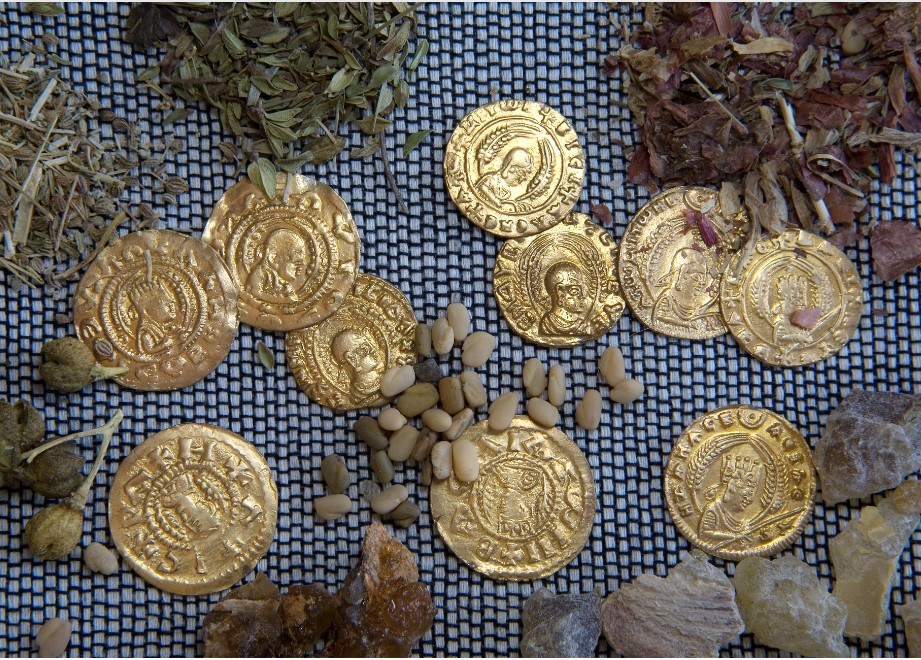Coins have a unique significance in the history of Aksum. They are particularly important because they provide evidence of Aksum and its rulers. The inscriptions on the coins highlight the fact that Aksumites were a literate people with knowledge of both Ge’ez and Greek languages.
Gold coins were inscribed in Greek and often intended for exports, while silver and copper coins were inscribed in Ge’ez (Aksumite script) and most probably for domestic trade.
The trade routes dominated by the Aksumites along the Nile Valley that led to the Red Sea and on into the Indian Ocean made Aksum a destination for many merchants and travelers.
The old religious symbols of the sun and the moon no longer appeared on coins and were replaced with a cross at 333 AD. The religious symbolism on these coins had strong political implications, as it aligned Aksum’s religious identity with its main trading partners, Rome and later Byzantium.
Aksum accepted Christianity in the 4th Century AD – 330 years after the birth of Christ. This makes the Aksumite kingdom among the first few states in the world that adopted Christianity early on. Ever since, Aksum has remained the Christian capital of Ethiopia.
Aksumite Historiography is all about restudying and rewriting the history of the Aksumite Empire by experts and historians.

